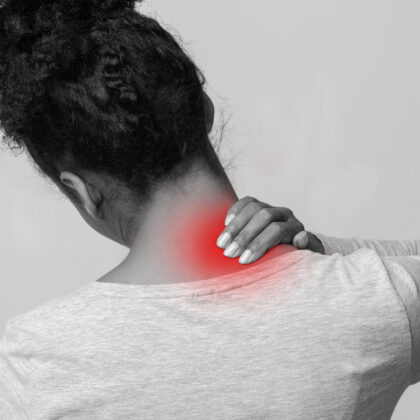Should we focus more on mental imagery to improve adolescent mental health? Clues from anxiety and “flashforwards”
The December BABCP Article of the Month is from Behavioural and Cognitive Psychotherapy and is entitled “‘Flashforward’ mental imagery in adolescents: exploring developmental differences and associations with mental health” by Alex Lau-Zhu, James Stacey, Daisy Gibson, Carmen Chan and Myra Cooper
Current CBT interventions are often thought to rely on “verbal thinking” yet much of our mental lives is also shaped by mental images – imagining visual scenes, sounds, smells, etc. In clinical practice with young people, we’ve observed that many struggle to articulate their thoughts purely with language, but can often describe intrusive images and find imagery work appealing. Yet, mental imagery has mainly been considered in adult formulations and treatments (cf. Pile et al., 2021; Schwarz et al., 2020).
We think there is a missed opportunity here. Imagery work can influence emotional regulation, tap into creativity, and foster a sense of agency – all of which seem to be particularly important in adolescence.
In this context, we explored one particular form of mental imagery – “flashforwards”. These are spontaneous images of future events (echoing “flashbacks” to the past). For example, an adolescent may imagine being laughed at during a school presentation or dying in hospital after a fatal illness.
Our work highlighted two key findings. First, similar to findings in adults (e.g. Di Simplicio et al., 2019), flashforwards – their emotional intensity – were linked to adolescent anxiety symptoms, as reported by adolescents and their caregivers.
Second, no apparent differences were found in flashforward intensity across different groups of adolescents. Informed by our routine work in CAMHS, we compared autistic adolescents, those exposed to maltreatment, and those without these developmental differences. Flashforward intensity was associated with anxiety in all three groups. We think this is an important finding because some may believe (all) autistic people lack mental imagery (King et al., 2024).
Readers may be interested in a related piece (Lau-Zhu et al., 2022) previously published in the sister journal, The Cognitive Behaviour Therapist. Here we considered flashforward imagery in a formulation for adolescent OCD. Imagery techniques (typically used in adult work) were incorporated to boost treatment, which were well-received by the adolescent.
This is a relatively new angle on youth mental health and much work remains to be done. We need to move beyond correlations, develop better measures, and co-design interventions.
But for now, we urge CAMHS clinicians to remain curious about mental imagery, because adolescents may not report imagery unless directly asked. Once revealed, could mental imagery expand our CBT toolkit for adolescents? We think so, and we’d love to hear your thoughts.
References
Pile, V., Williamson, G., Saunders, A., Holmes, E. A., & Lau, J. Y. F. (2021). Harnessing emotional mental imagery to reduce anxiety and depression in young people: an integrative review of progress and promise. The Lancet Psychiatry, 8(9), 836–852. https://doi.org/10.1016/s2215-0366(21)00195-4
Schwarz, S., Grasmann, D., Schreiber, F., & Stangier, U. (2020). Mental imagery and its relevance for psychopathology and psychological treatment in children and adolescents: A systematic review. International Journal of Cognitive Therapy, 13(4), 303–327. https://doi.org/10.1007/s41811-020-00092-5
Di Simplicio, M., Lau-Zhu, A., Meluken, I., Taylor, P., Kessing, L. V., Vinberg, M., Holmes, E. A., & Miskowiak, K. W. (2019). Emotional mental imagery abnormalities in monozygotic twins with, at high-risk of, and without affective disorders: present in affected twins in remission but absent in High-Risk twins. Frontiers in Psychiatry, 10. https://doi.org/10.3389/fpsyt.2019.00801
King, R., Buxton, H., & Tyndall, I. (2024). Aphantasia and autism: An investigation of mental imagery vividness. Consciousness and Cognition, 125, 103749. https://doi.org/10.1016/j.concog.2024.103749
Lau-Zhu, A., Farrington, A., Bissessar, C. (2022). Boosting exposure and response prevention with imagery-based techniques: A case study tackling sexual obsessions in an adolescent. The Cognitive Behaviour Therapist. 2022;15:e9. https://doi.org/10.1017/S1754470X22000058
From Paul Salkovskis, the Editor-in-Chief of BCP: Why I chose this article
It has long been clear to me that the idea that “a picture is worth a thousand words” is particularly appropriate when it comes to emotional problems. This has, of course, come into sharp focus in terms of trauma responses and the importance of imagery linked to past events is now well established both clinically and in research findings, including important causal links. This is less evident in anxiety, with particular gaps in our understanding in younger people. This paper goes some way to filling that gap, and as might be expected from research of this high calibre, it raises many more questions than it answers (although the answers are excellent and relevant). That, of course, is why it is such a good paper.
Brief bio and picture

Dr Alex Lau-Zhu (PhD DClinPsy) is a Medical Research Council Clinician Scientist Fellow at the Department of Experimental Psychology, and a Committee for Children Junior Research Fellow at Linacre College, University of Oxford. He is also a Clinical Psychologist (with BABCP accreditation in CBT) in Horizon, a specialist service in Oxford Health CAMHS for youth complex trauma. His translational research team seeks to drive innovation in youth mental health with the science of mental imagery, as it relates to trauma, anxiety, and autism.






